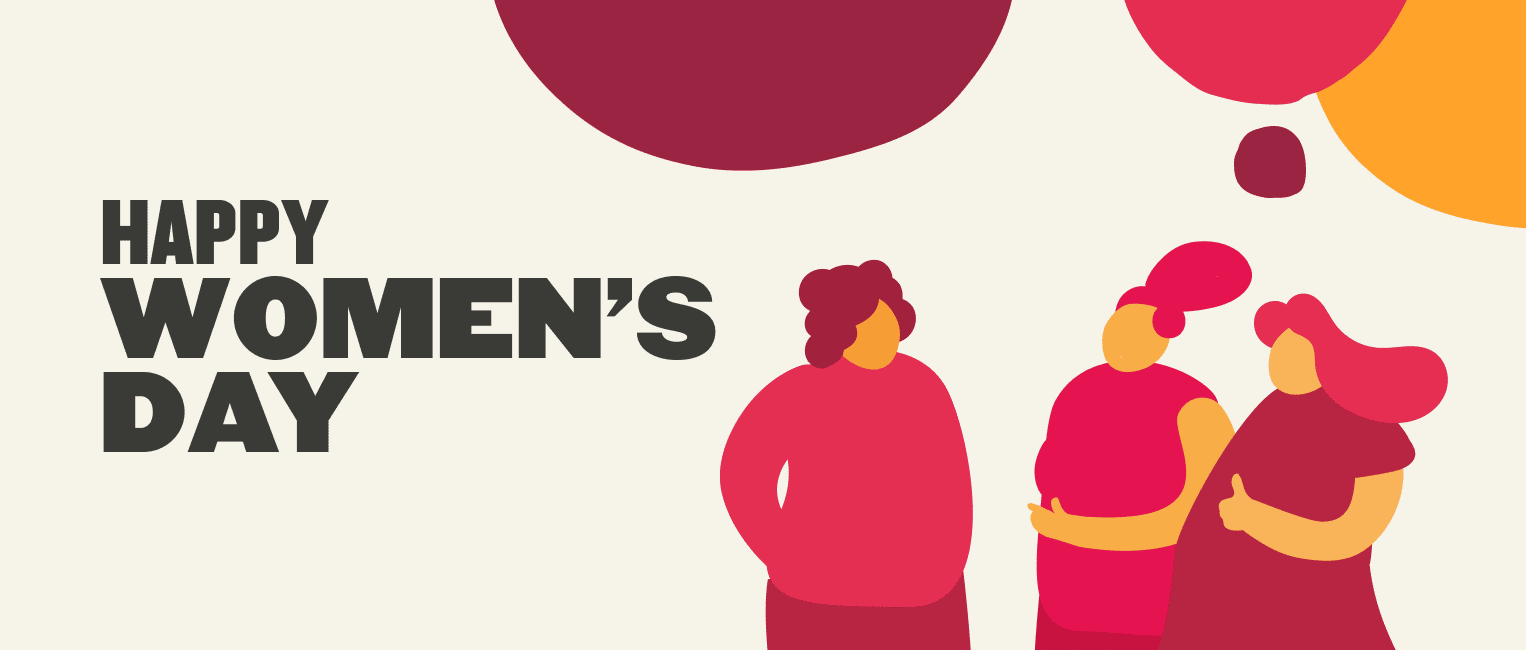To celebrate International Women’s Day, we set out to learn about the pandemic’s impact on women in the workplace. To understand where we are and how far we need to go, we asked our customers how they’re celebrating and empowering their female employees.
Our customers’ answers mirrored what numerous studies show: To support and promote women in the workplace, make flexible work the gold standard (over 90% surveyed agreed).
How flexible work can help women have it all.
The impact of COVID on Tami Silberman’s work-life was a blessing in disguise. Before March 2020, Tami, a VP of Sales and mother of four boys (8, 10, 13, and 16), woke at dawn to get the kids ready for school and make the 8:30 train. She’d come home around seven to cook dinner, ask her kids how their day was, and then head off for a 9:30 pilates class (a bit of “me time”) to end her day.
“I knew it was crazy, but this is what I knew, and this is what I was used to,” she said.
Tami defines herself as a workaholic and a momaholic. When COVID forced her out of the office, there was suddenly an opportunity to bring the two into balance. And she’s never going back again.
No longer dictated by the train schedule and free from her three-hour commute, Tami has more time and energy to focus on work. She relishes the small moments during the day when she can step away from the computer and be a mom again—checking in on her son while brewing another pot of coffee, taking the dog for a walk between meetings, eating lunch outside with the family. Precious moments that her old work life couldn’t provide.
When we asked our customers how their company culture supports initiatives to promote women to management, over 90% cited flexible work models (hybrid, WFH, remote) and flexible workdays (instead of the 9-5).
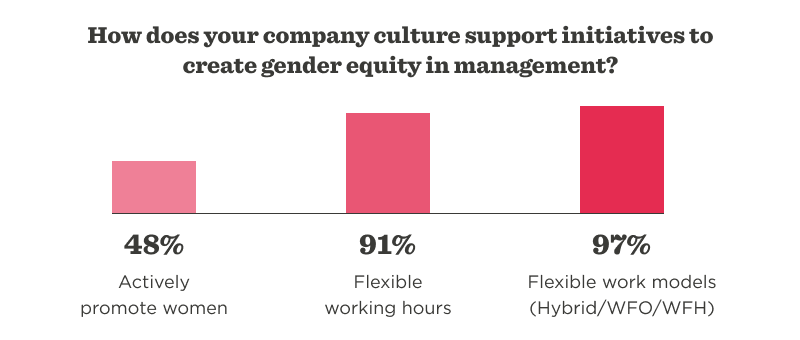
How can companies create more flexibility in the workplace?
Flexible working shouldn’t just include the option to WFH.
As a manager, Tami has built trust to allow her team members to work the way they see fit. Most important to her are results.
“What’s important for me is to see each team member’s passion, motivation, and enthusiasm for their work. They need to care about what they do, love their job, and want to succeed,” said Tami. “If they have these aspirations, then I know they’re doing a good job, and I can trust them and give them that flexibility.”
Allow employees to set their hours and work the way they want to. Measure performance on quality and output instead of time spent plugged in. Record important meetings so if a mom has to help her kid with homework, she can hear about the Q1 product roadmap later.
We also asked companies what they were doing to support working moms, who are bearing the bulk of childcare due to school closures and lockdowns.
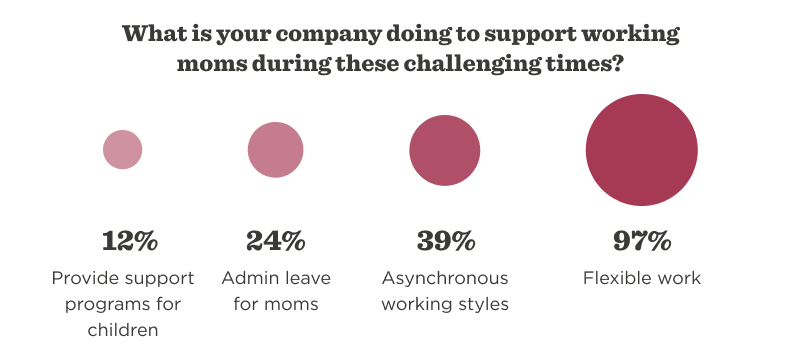
A flexible work schedule was again overwhelmingly chosen. Flexible working isn’t a “nice to have” that applies only to working moms—it’s necessary for everyone. Encouraging a healthy work/life balance and allowing all of your employees to step away when they need to is just good business.
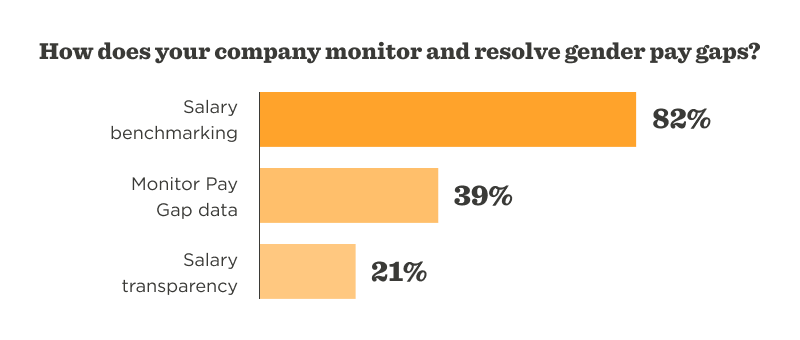
What else can companies do to support women?
It’s November 2020, and Sonia Frassetti is sitting on the cold tiled floor of her bathroom, waiting for a Zoom interview to begin. With unemployment high and a pandemic raging, Sonia is desperate to get back to work, and she isn’t going to take any risks. The risk today is that one of her two children, home from school since March, might interrupt the video interview, revealing her big secret—that she’s a mom to two young kids. Suddenly the interview takes a sharp turn, and Sonia’s not asked about her experience or relevant skills, but instead, she’s asked how she’ll be able to manage child care and a full-time position.
Sonia persevered, as mothers do, and got creative when she had to, and eventually found a job that she loves. Other women were not as lucky.
Sonia, and millions of working mothers like her, bore a disproportionate amount of child care during the pandemic. With children home from school, unable to socialize with friends, the burden fell on mothers to step in and become teachers, friends, coaches, lunch ladies, and so much more. As a result, women were forced out of the workplace in huge numbers. And moms like Sonia had to find creative ways to keep their “secret.”
So how can we change this? How can we create companies, and interview processes, that help working mothers?
Recommended For Further Reading
Being a mother is often seen as a burden, not an asset. To change that, lead with empathy and openness.
As the pandemic disrupts working lives, HR and managers need to step in and have open and supportive conversations with their teams to ensure their employees are okay. Leading with empathy means that you see the people you work with as people first-with lives outside of the workplace.
Tami’s approach as a manager is that “you can’t separate between work and personal life.” If one of her team members feels overwhelmed or is dealing with something stressful outside of work, she’s there to talk about it and support her team. Let employees know that their personal lives will get in the way of work, and you understand that. When interviewing recruits, let them know it’s okay to check on their kid for a minute and come back to the conversation. Work is important, but life happens. Give women, and all employees, enough space for both.
Celebrating International Women’s Day
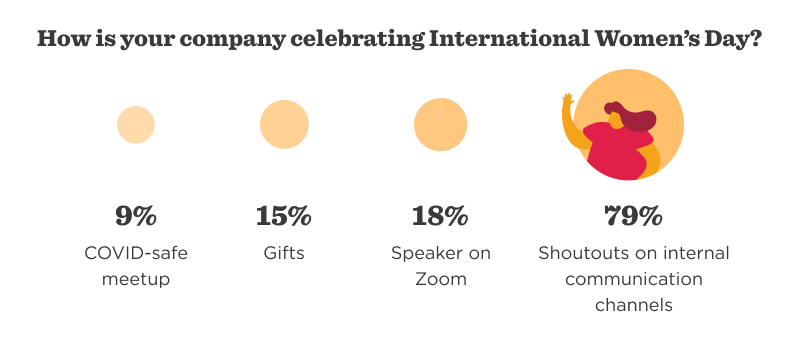
As we celebrate International Women’s Day, we’re here to acknowledge that we can do more. We need to empower women to reach their potential, give women the freedom not to choose between being a mom and being a boss, and create more equity at home and the office.
Women get it done. Let’s start recognizing that.
